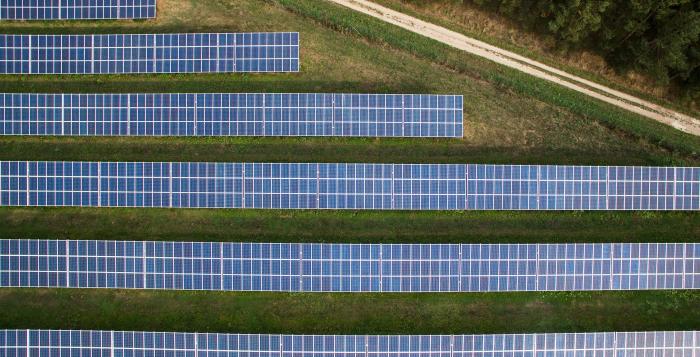TNUoS charges recover the cost of installing and maintaining the transmission system in England, Wales, Scotland and Offshore.
Who does this charge apply to?
✓ Generators
✓ Suppliers
✓ Directly connected Transmission demand
✕ Distribution Network Operators
✓ Embedded Generators*
✕ Interconnectors
On this page you will find information related to TNUoS charges, such as guidance on who these charges apply to and how/when these charges are billed. Our latest and historical TNUoS publications and other relevant documentation are provided, along with ways to interact with the tariff setting process, ask questions and provide feedback.
*Certain embedded generators (<100MW) receive export payments over triad
How am I charged?
Generators are charged according to TEC (Transmission Entry Capacity). Suppliers are charged based on actual demand. All tariffs are based on which geographical zone Users are connected to.
TNUoS tariffs are published annually by 31 January and take effect from 1 April each year.
Latest news and updates
| Title | Date |
|---|---|
| TNUoS tariffs April 2022 five-year view (2023/24-2027/28) published | unknown |
| TNUoS 2022/23 Final Tariffs Report Published | 31 Jan 2022 |
| TNUoS Tariffs April 2021 5-Year View published | unknown |
| ESO 2021/22 Charging Statement published | 01 Apr 2021 |
| Timetable of TNUoS forecast for 2022/23 updated | 03 Mar 2021 |
Events
When we publish our latest forecasts of TNUoS tariffs, we are committed to holding webinars to talk through our publications and take your questions.
We will also be holding TNUoS Tariff & Transport (DLCF ICRP) Model training sessions, details of how to sign up will be posted here.
| Title | Slides | Webinar | Date |
|---|---|---|---|
| TNUoS Tariffs August Forecast (2023/24) | Download the slides | Watch the webinar | 22 Sep 2022 |
| TNUoS 5-Year View Tariffs Webinar | Watch the webinar | 14 Apr 2022 | |
| TNUoS 2022/23 Draft Tariffs webinar | Download the slides | Watch the webinar | 14 Dec 2021 |
| TNUoS Tariffs (2022/23 – 2026/27) 5-Year View webinar | Download the slides | Watch the webinar | 13 Apr 2021 |
| 2021/22 Final Tariffs webinar | Download the slides | Watch the webinar | 16 Feb 2021 |
| 2021/22 November Draft Tariffs webinar | Download the slides | Watch the webinar | 10 Dec 2020 |
TNUOS tariffs and notifications of changes
The documents below contain the TNUoS tariff forecasts and notifications of tariff changes.
Updates for next year's tariffs are published quarterly in accordance with the Connection and Use of System Code (CUSC).
2023/24 Tariff Publications (Current year tariffs)
2022/23 Tariff Publications
| Name | Published Sort ascending |
|---|---|
| Final Specific ALFs 2022-23 - Table | 23 Mar 2022 |
| Final Specific ALFs 2022-23 - Report | 23 Mar 2022 |
| January 2022-23 TNUoS Final Tariffs - Webinar (Slide Pack and Link to Recording) | 15 Feb 2022 |
| Final TNUoS Tariffs for 2022-23 – Tables | 31 Jan 2022 |
| Final TNUoS Tariffs for 2022-23 – Report | 31 Jan 2022 |
| November Draft 2022-23 TNUoS Tariffs - Webinar | 21 Dec 2021 |
| November Draft TNUoS Tariffs for 2022-23 – Tables | 30 Nov 2021 |
| November Draft TNUoS Tariffs for 2022-23 - Report | 30 Nov 2021 |
| Draft ALFs for 2022-23 | 17 Nov 2021 |
| August Forecast TNUoS Tariffs for 2022-23 - Tables | 31 Aug 2021 |
2021/22 Tariff Publications
Tariff Publications - Archive (Pre 2021/22)
| Name | Published Sort ascending |
|---|---|
| 2021-25 August 5YV TNUoS Tariff Webinar and Recording | 23 Sep 2020 |
| Final TNUoS Tariffs for 2020-21 - Report - Updated | 4 Mar 2020 |
| TNUoS 2020-21 Final Tariff Webinar | 13 Feb 2020 |
| Final TNUoS Tariffs for 2020-21 - Tables | 31 Jan 2020 |
| November Draft TNUoS Tariffs for 2020-21 - Webinar slides and recording | 14 Dec 2019 |
| Final ALFs for 2020-21 | 29 Nov 2019 |
| November Draft TNUoS Tariffs for 2020-21 - Report | 29 Nov 2019 |
| November Draft TNUoS Tariffs for 2020-21 - Tables | 29 Nov 2019 |
| Draft ALFs for 2020-21 | 25 Oct 2019 |
| July Forecast TNUoS Tariffs for 2020-21 - Webinar slides and recording | 15 Aug 2019 |
5-Year View Tariff Publications
Tariff change notifications
| Name | Published Sort ascending |
|---|---|
| 150 Day Notice for 2024-25 Charges | 2 Nov 2023 |
| 150 Day Notice for 2023-24 Charges | 3 Nov 2022 |
| 150 Day Notice for 2022-23 Charges | 21 Oct 2021 |
| 150 Day Notice for 2021-22 Charges | 28 Oct 2020 |
| 150 Day Notice for 2020-21 Charges | 17 Oct 2019 |
| 150 Day Notice for 2019-20 Charges | 23 Oct 2018 |
| 150 Day Notice for 2018-19 Charges | 12 Oct 2017 |
| 150 Day Notice for 2017-18 Charges | 21 Jun 2017 |
| 150 Day Notice for 2016-17 Charges | 29 Oct 2015 |
| 150 Day Notice for 2015-16 Charges | 29 Oct 2014 |
TNUoS tariff model
We publish the DC load flow investment cost-related pricing (DCLF ICRP) transport model, which allows users to undertake their own sensitivity analysis of generation and demand tariffs under different scenarios.
If you'd like a copy of the DCLF ICRP transport model, please contact us.
For more detailed information on the DCLF ICRP, please see chapter 2 of the statement of the use of system charging methodology in section 14 of the CUSC.
Transport model inputs
Electricity Ten Year Statement (ETYS) annual publications (appendix G – week 24 demand data & appendix F – generator TEC register) are used as key inputs for the calculation of TNUoS tariffs.
| Name | Published Sort ascending |
|---|---|
| ETYS 2023 Appendix G | 30 Nov 2023 |
| ETYS 2023 Appendix F | 30 Nov 2023 |
| ETYS 2022 Appendix G | 30 Jan 2023 |
| ETYS 2022 Appendix F | 30 Jan 2023 |
| ETYS21 AppF generation data | 23 Dec 2021 |
| ETYS21 AppG demand data | 23 Dec 2021 |
| ETYS20 AppG demand data | 17 Dec 2020 |
| ETYS20 AppF generation data | 17 Dec 2020 |
| ETYS19 AppG demand data | 29 Nov 2019 |
| ETYS19 AppF generation data | 29 Nov 2019 |
What are triads?
Triads are the three half-hour settlement periods with highest system demand. We use them to determine charges for demand customers with half-hour metering and payments to licence-exempt distributed generation.
Want to know more?
Take a look at our guidance on triads.
Note: indicative triads are based on data received to date can be found on Elexon's electricity data summary.
Triad data 2014-2023
Here is the Triad data for 2014-2023
| Name | Published Sort ascending |
|---|---|
| 2023_24 Triad Data | 28 Mar 2024 |
| 2022_23 Triad Data | 3 Apr 2023 |
| 2021-22 Triad Data | 29 Mar 2022 |
| 2020-21 Triad Data | 26 Mar 2021 |
| 2019-20 Triad Data | 26 Mar 2020 |
| 2018-19 Triad Data | 26 Mar 2019 |
| 2017-18 Triad Data | 22 Mar 2018 |
| 2016-17 Triad Data | 27 Mar 2017 |
| 2015-16 Triad Data | 24 Mar 2016 |
| 2014-15 Triad Data | 27 Mar 2015 |
Triad data pre-2014
Here is the Triads data pre-2014.
More from charging
Our charging documentation page is where you can now find all of our charging statements and policy developments along with all the guidance documents and webinars you need if you're new to charging.
Submit a query through our webform, get involved through forums and steering groups, or reach out to the relevant charging team.
Join our mailing list to receive publication updates, invitations to our forums, webinars and workshops, and links to our latest guidance materials.
Use the ESO Data Portal to gain access to TNUoS tariff datasets that are geared towards API compatibility, providing additional flexibility to end users of tariff data.








